Frequently Asked Questions
What is a “food forest”?
Imagine walking through the park and looking up at a canopy of fruit and nut trees. Around and below you, there are shrubs and many other types of plants bearing fruits, vegetables, and herbs free for the taking. These are the basics of a food forest.
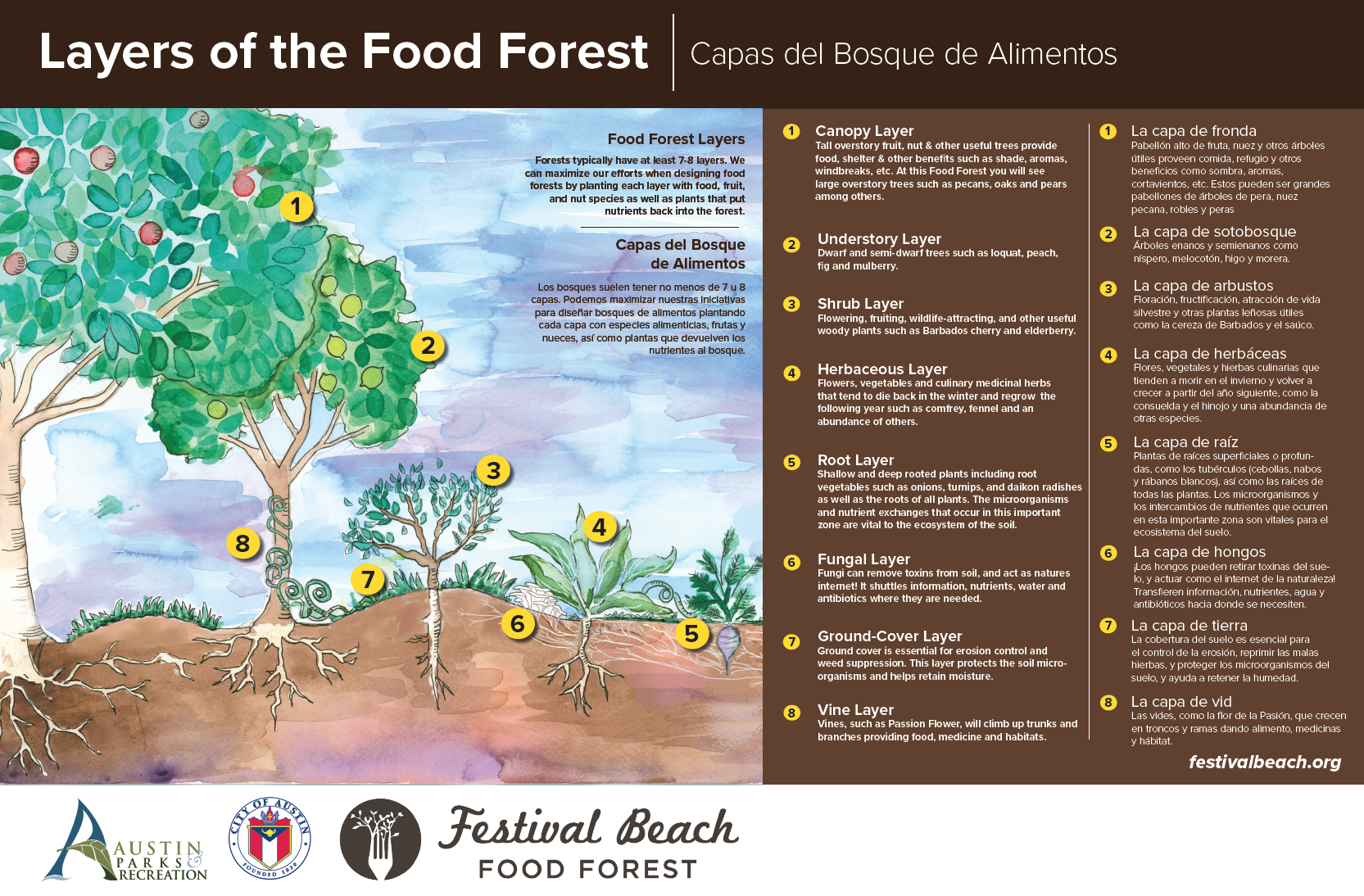
A Food Forest is an age-old agricultural strategy where people plant diverse types of edible, climate appropriate plants that form strong, mutually supportive relationships, creating a system that sustains itself over time. Food forests produce high yields of food, with minimal maintenance – humans design with nature to let nature work on her own.
Like a healthy woodland ecosystem, a healthy food forest has multiple levels. Fruit and nut trees are the upper level, while below are berry shrubs, as well as a mix of other edible plants that benefit from the shade of the canopy trees. Some supporting plants are strategically included to attract beneficial insects for natural pest management.
Other plants are included to make the soil healthier by providing nitrogen and mulch. By working with nature, we work less. In a food forest, humans help set the conditions where they, the plants, and local animals can keep the system going over time.
What can you do in a public food forest?
There are so many things to do in the food forest! Bring your kids and elders to the park to taste what’s there, read informative signage on which plants are medicinal and when they’re ripe enough to pick, enjoy art in public places, learn about how you can apply permaculture water-saving techniques in your own yard, or just come enjoy a beautiful spot for a picnic!
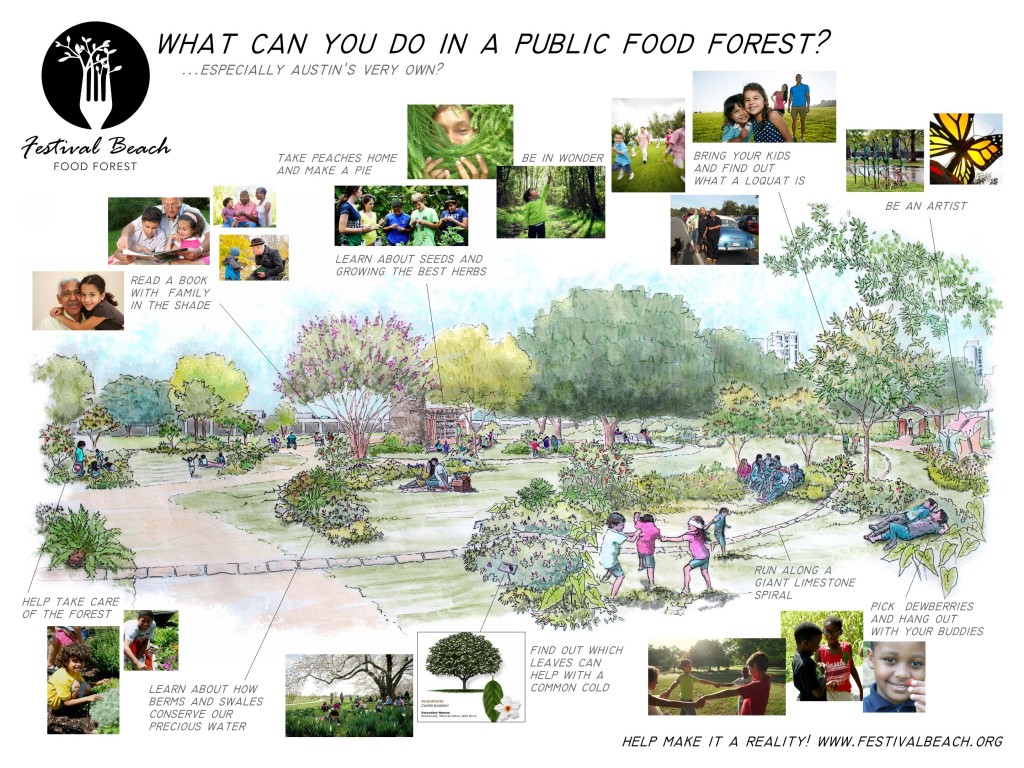
Where did the idea come from for the Festival Beach Food Forest?
The Food Forest vision took root over years of community conversations about the future of the 90 acres of parkland on the northern shores of Lady Bird Lake, starting in 2012. East Feast conducted a series of workshops to reach out to the community and find out how they felt about having a food forest in their city. The vision has been widely supported by city departments and organizational partnerships (see our Sponsors page).
At the heart of this movement was a plan to establish Austin’s first publicly owned food forest in Festival Beach Park, as a way to protect and enhance the natural beauty, tranquility, and ecological health of the parkland, while also making fresh fruit and vegetables part of the daily experience of neighbors and visitors enjoying the parkland.
Our work is grounded in the heritage of local neighborhoods and inspired by the possibility of renewing relationships with the land and with people. We continually strive to strengthen and honor the community through our educational events, volunteer opportunities, food and plant sharing and other activities.
The first public food forest in the US is the Beacon Food Forest in Seattle, WA
How do I harvest and forage responsibly?
Respect the Forest: Do not damage or dig up plants, disturb wildlife, or take more than you need.
Harvest Sustainably: Gather only when plants are abundant and healthy. Take only what you need to share the bounty with others and leave some flowers or fruits to reseed for future growth.
Be Mindful: Double check what you harvest. Not all plants are edible, so be sure you know what is safe to eat.
Take Food, Not the Forest: Focus on gathering fruits, vegetables, and herbs without harming the ecosystem.
Give Back: For those with the means, help us care for the forest! Sign up to volunteer or make a donation.
Why use a public park instead of private land?
A food forest could be anywhere, right? This one is extraordinary, because it exists in an Austin public park, making it accessible to all who visit. The City of Austin views the project as a pilot for other parks.
There are many established permaculture projects on private land. Having a permaculture food forest on public land builds community, allows for greater diversity in use of public space, adds food security, conserves natural resources, and provides critical wildlife habitat in urban areas.
What is the difference between Festival Beach Food Forest and Festival Beach Community Garden?
The Festival Beach Food Forest is a fence-less community space that borders the thriving community garden already established at Festival Beach. The Community Garden primarily offers individual plots for members, whereas the Food Forest offers common ground and public produce to be enjoyed and supported by the community at large. If you are interested in volunteering or applying for a plot at the Festival Beach Community Garden, you can visit their website at http://festivalbeachgarden.org/.
How can I get involved?
You can join us for community events and volunteer workdays. Now is the perfect time to engage friends and neighbors in conversations about the food forest phase 2 expansion! The future of the project depends on the extent to which it is loved, protected, and nourished by the greater community. Please contact us here and let us know how you would like to get involved.
Where is the Festival Beach Food Forest?
The FBFF is located on the west side of the Rebekah Baines Johnson (RBJ) Center, at I-35 and the Colorado River. It is south of the Festival Beach Community Garden. Phase 1, approved under the Holly Shores Master Plan, is the westernmost two-thirds of an acre. The full site covers 2.43 acres.
One of the reasons the food forest nestled itself in this location in 2014, next to the Festival Beach Community Garden, is because the RBJ is home to many low-income seniors who have lived in East Austin for many decades, and the founders of the food forest wanted to help preserve affordability, diversity and healthy food access in this area.
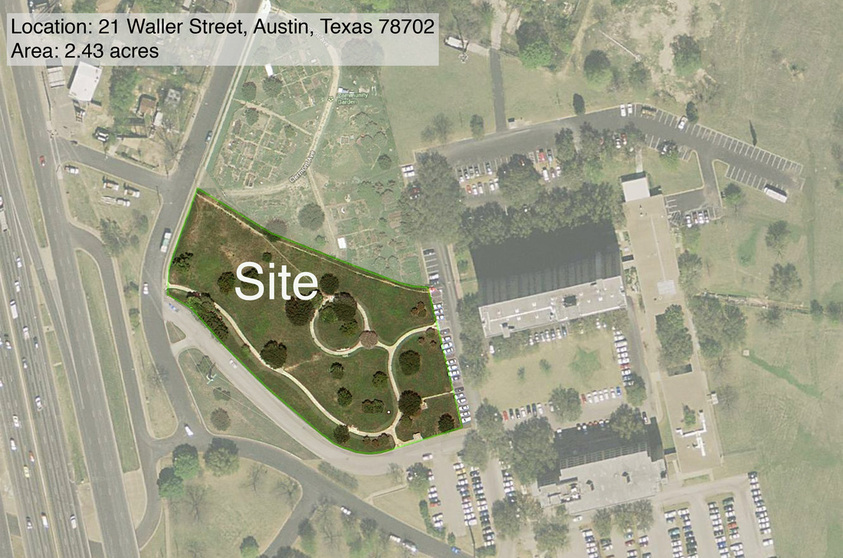
What is next for the Festival Beach Food Forest?
In late 2019 the Festival Beach Food Forest core team had a vision for building upon the thriving food forest we had created by expanding our acreage. As we planned the expansion, we wanted to encourage our surrounding community to help us nurture the food forest, community garden and low-income residential center that make up our campus. We also envisioned that after a year of community engagement and design processes we could share our tangible and useful strategies for how we went about it so that others communities would be inspired and follow suit. After all, growing edible forest gardens on public land that nourish, educate and inspire is our mission. It was time to grow in many ways!
As of now, the FBFF team continues to bring together the City of Austin Urban Forestry, Parks and Recreation Department, the Office of Sustainability, City Council, 501c3 Fruitful Commons, Capital Metro, private developers and other organizations to work together to expand this unique oasis in the dense urban core of one of the fastest growing cities in the country. We are confident that through the success of this project, more will grow. Through providing a successful and scalable model, we will bring about joyful and verdant community-led solutions to our complex food access, equity, and climate resiliency issues our world faces.
Learn more about the Phase 2 expansion plans here.
How is the Food Forest project being funded?
The food forest is funded through grants and individual donations. We are volunteer-led, and require many resources to keep our ecosystem healthy and flourishing. Help us by donating here!
What is permaculture and why does it matter?
From the Permaculture wiki: Permaculture is a branch of ecological design, ecological engineering, and environmental design that develops sustainable architecture and self-maintained agricultural systems modeled from natural ecosystems.The core tenets of permaculture are:
- Care of the earth: Provision for all life systems to continue and multiply. This is the first principle, because without a healthy earth, humans cannot flourish.
- Care of the people: Provision for people to access those resources necessary for their existence.
- Return of Surplus: Reinvesting surpluses back into the system to provide for the first two ethics. This includes returning waste back into the system to recycle into usefulness.
Permaculture design emphasizes patterns of landscape, function, and species assembly. It determines where these elements should be placed in order to provide maximum benefit to the local environment with minimal input. The central concept of permaculture is maximizing useful connections between components and synergy of the final design. The focus of permaculture, therefore, is not on each separate element, but rather on the relationships created among elements by the way they are placed together; the whole becoming greater than the sum of its parts. Permaculture design therefore seeks to minimize waste, human labor, and energy input by building systems with maximal benefits between design elements to achieve a high level of synergy. Permaculture designs evolve over time by taking into account these relationships and elements and can become extremely complex systems that produce a high density of food and materials with minimal input.
The design principles which are the conceptual foundation of permaculture were derived from the science of systems ecology and study of pre-industrial examples of sustainable land use. Permaculture draws from several disciplines including organic farming, agroforestry, integrated farming, sustainable development, and applied ecology. Permaculture has been applied most commonly to the design of housing and landscaping, integrating techniques such as agroforestry, natural building, and rainwater harvesting within the context of permaculture design principles and theory.
For more information about permaculture and permaculture projects in Austin, visit www.austinperm.com.
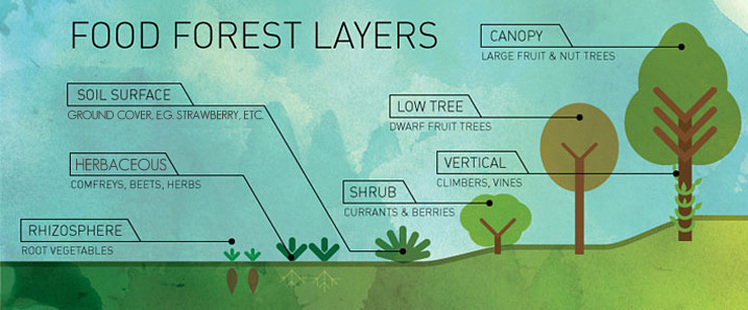
How did you choose Fruitful Commons as your umbrella organization?
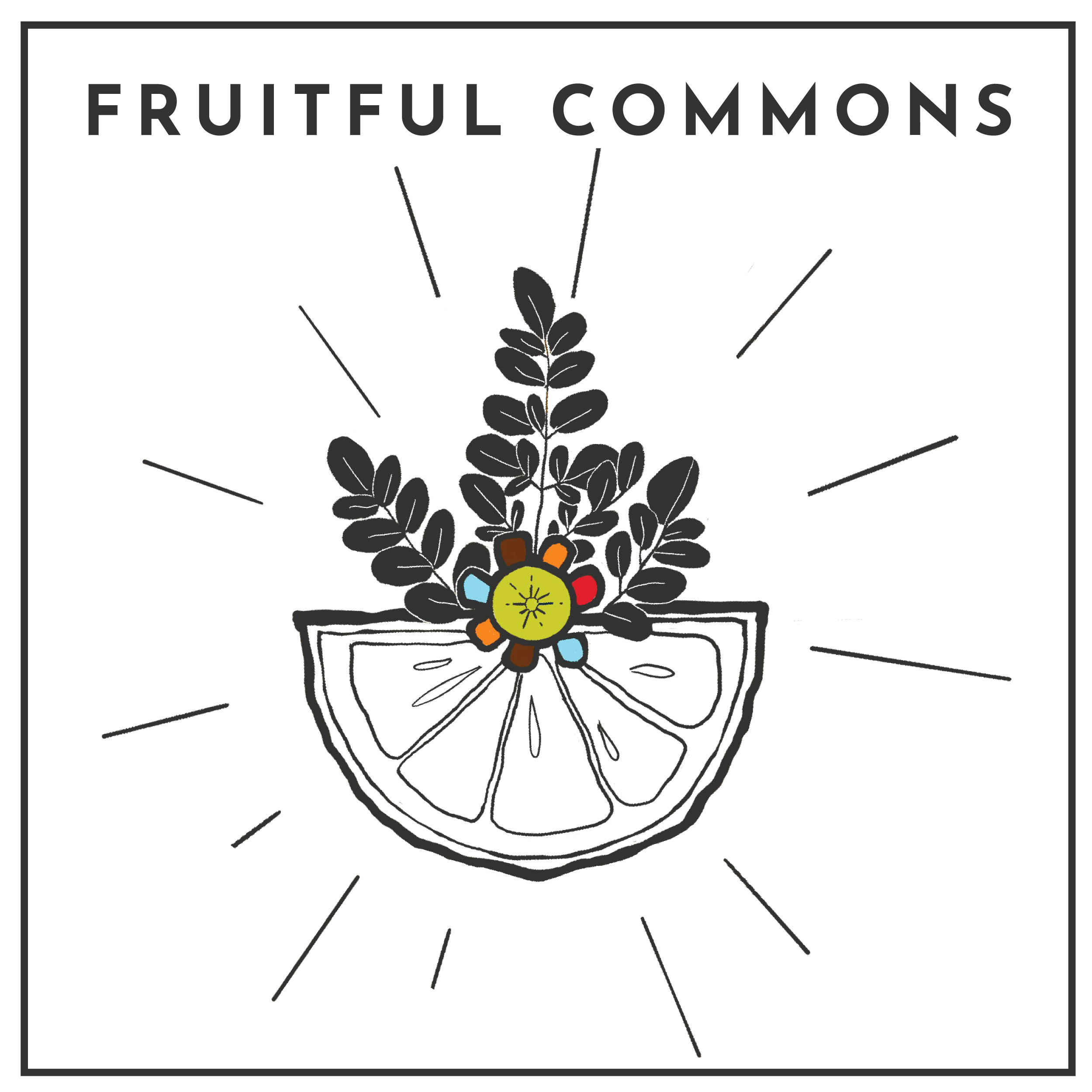
Several food forest founders recently started a 501c3 called Fruitful Commons which will offer administrative, financial and programming support for community-led agriculture projects that help reclaim “the commons” for everyone. Our relationship creates a synergy, where the sum total of our resources and contributions is greater than individual efforts.
Our story of how we transformed an urban green space into a productive food forest is unique and is by no means the “right” or only way to do it. All such projects are unique and that is worth celebrating! We hope that we inspire the growth of other community-led projects that add more tree canopy, regenerate the soil, capture carbon, educate young leaders on how our natural systems work, and are accessible to all who want to enjoy a tranquil oasis.
Get In Touch or Visit The Food Forest Anytime
Get your hands in the soil with us!